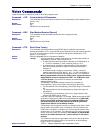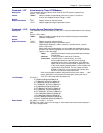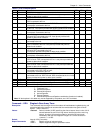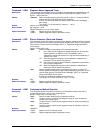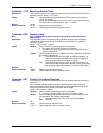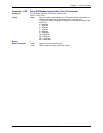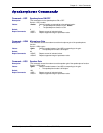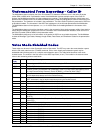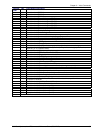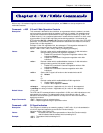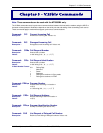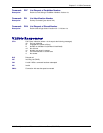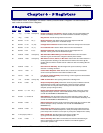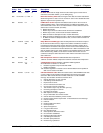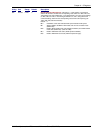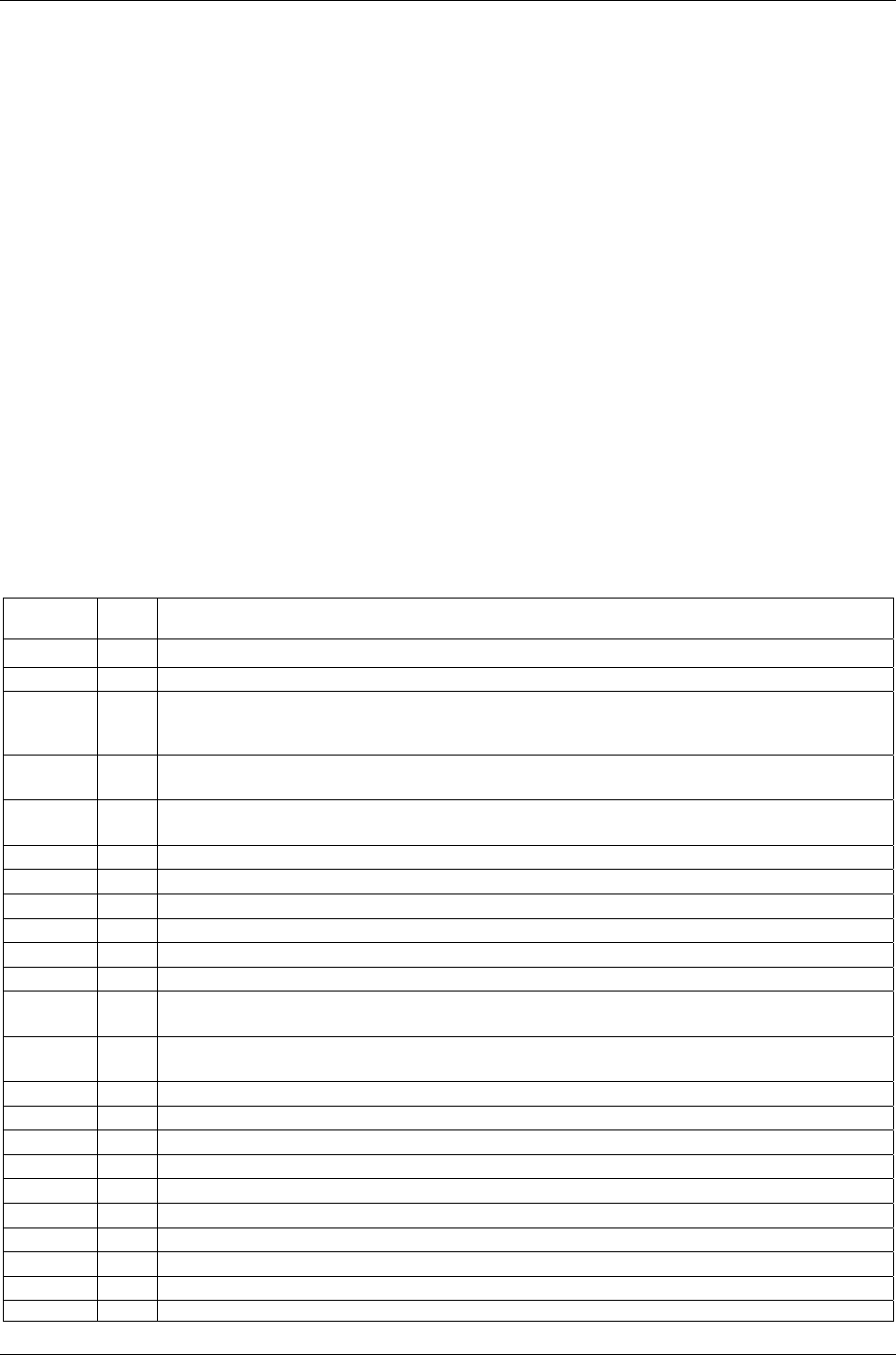
Chapter 3 – Voice Commands
Multi-Tech Systems, Inc. AT Commands Reference Guide (S000273G) 38
Unformatted Form Reporting – Caller ID
The MultiModem does not display the Caller ID information if it detects a checksum error in the caller ID packet
(either SDM or MDM) while in presentation mode. If the MultiModem receives multiple copies of the Caller ID
packets, the MultiModem presents all of the packets to the computer. The MultiModem presents all data items and
packet control information found in the SDM and MDM packets, except the leading Us (line seizure information) from
the presentation. The checksum is included in the presentation. The entire Caller ID packet is presented in ASCII hex
as printable numbers. The characters in the ASCII hex message are in the bit order presented to the MultiModem.
The MultiModem does not insert spaces, <cr>, or <lf> ASCII codes for formatting between the characters of the
packet.
The MultiModem does not check the checksum, and it is the computer’s job to check message validity. Note that this
means that the MultiModem presents the Caller ID information even if the MultiModem detects a check sum error in
the Caller ID packet (SDM or MDM) in the presentation mode.
The MultiModem presents all of the information in the packet in ASCII hex as printable characters. The MultiModem
includes all Message Type Octets, Message Length Octets, Data Octets, and Checksum Octets for the presentation
mode.
Voice Mode Shielded Codes
These codes can be sent in either Command mode or Data mode. The DCE may return the event detection reports
after the OK result code from the +FCLASS command. One or more simple event detection reports may be
embedded within the data portion of a complex event detection report. The Table below describes voice mode
shielded codes. The number in the first column is the ASCII equivalent (in hex). The number in the second column
refers to the numbering scheme used below.
Shielded
Code
Hex Event Report Description
<DLE> (10) Two contiguous <DLE><DLE> codes indicate a single <DLE> in the data stream.
<SUB> (1A) <DLE><DLE> in the data stream.
<ETX> (3) End Data State; signifies the end of voice data. Can end with Event 9 (Presumed Hangup
Timeout), Event 10 (Presumed End of Message), Event 13 (Loop Current Interruption), Event
14 (Loop Current Polarity Reversal), Event 19 (BUSY), or Event 20 (DIALTONE).
Q (51)
Data stream shielded Xon character. Used in the +VXT command to shield XON characters in
the full-duplex data stream and in the Packet Protocol.
S (53)
Data stream shielded Xoff character. Used in the +VXT command to shield
XOFF characters in the full-duplex data stream and in the Packet Protocol.
M (4D) Data stream shielded SOH code used for the Packet Protocol.
W (57) Data stream shielded ETB code used for the Packet Protocol.
F (46) Data stream shielded ACK code used for the Packet Protocol.
U (55) Data stream shielded NAK code used for the Packet Protocol.
G (47) Data stream shielded ENQ code used for the Packet Protocol.
T (54) Timing Mark.
X (58)
Packet Header for the "Complex Event Detection Report" (additional event data transfers to
the DTE).
. (2E)
Packet Terminator for the "Complex Event Detection Report" (additional event data transfers
to the DTE).
/ (2F) Start of DTMF tone shielding.
~
(7F) DTMF transitions to off.
R (52) Event Number 3 (RING). The <DLE> shielded version of the RING result code.
1 (31) Event Number 4 (DTMF 1).
2 (32) Event Number 4 (DTMF 2).
3 (33) Event Number 4 (DTMF 3).
4 (34) Event Number 4 (DTMF 4).
5 (35) Event Number 4 (DTMF 5).
6 (36) Event Number 4 (DTMF 6).
7 (37) Event Number 4 (DTMF 7).



